7 ways to drive more sales using pricing psychology
Are you treating your pricing page like the huge opportunity it is?
Your pricing page is crucial to the success of your business. Get it right and turn visitors into customers. Get it wrong and visitors will hit the back button faster than you can say, “Was it something I said?”.
Pricing pages represent the point at which a visitor is getting very, very close to making the leap from prospect to customer. That’s probably why they’re so difficult to write and to optimise.
Fortunately, there are psychological triggers you can use on your pricing page to motivate, influence and persuade prospects to take that next step and buy from you.
In this article we’ll show you seven tweaks you can make on your pricing page to drive more sales. And the great thing is that none of these tweaks require technical works. They’re straightforward and easy to experiment with so let’s get started!
1. Add a sense of urgency to purchases
“30% off for 24h hours only”, “This offer is only valid until…”. How many times have you seen these types of marketing messages and felt compelled to take action?
Booking.com use a similar strategy by letting visitors know how many other people are looking at the hotel right now, how many rooms are left, and how long until the offer expires.
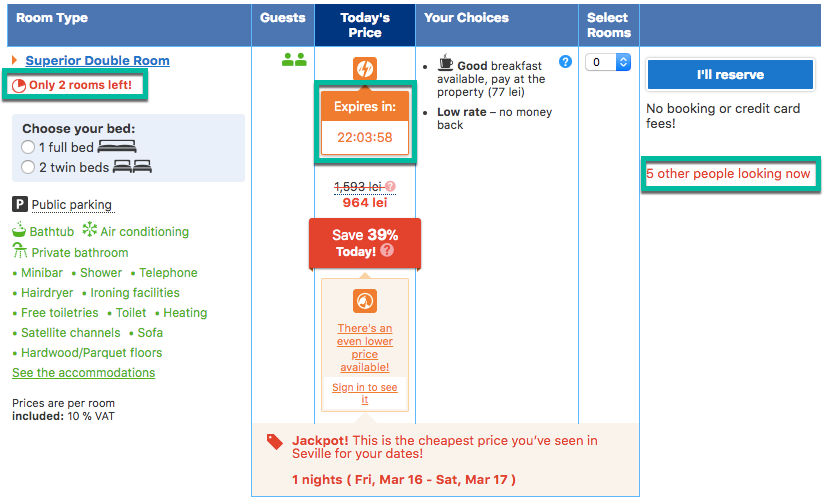
Why does this strategy work? It’s because of the fear of missing out (FOMO). When there’s a deadline attached, we think that we might be missing out on some amazing deal if we don’t act now. It’s why we get so excited when we stumble upon a great deal on a new pair of shoes.
So if someone slaps on a “hurry, offer ends in x minutes” sign, we’re much more likely to act now rather than spending a few more minutes, hours or even days thinking about the product.
What to do next:
Experiment with adding deadlines on your pricing page. Create a sense of urgency by being time-bound or in terms of limited quantities.
2. Use scarcity to your advantage
This ties in well with urgency. Scarcity motivates people to act fast by letting them know the product or the deal is limited. For example, you can offer a 50% discount on a product for 48 hours and also limit it to only the first 50 people to take action.
Amazon does this well by displaying the number of products left in stock to encourage you to buy now, rather than later.

This strategy isn’t new but it sure is effective. Remember when Google launched its social network Google Plus back in 2011? They successfully used a scarcity strategy to get the word out. Initially, you could only get on it by invitation only, and a limited number of users were given 15 invitations apiece to bring others on board. That created a frenzy as everyone wanted in, and that’s because not everyone could get in.
What to do next:
Have a new feature or product to launch? Motivate people to sign up for exclusive access by introducing a limit on how many customers can try it out before it launches to the public. Also apply this technique if you’re running a promotion and limit the number of products on sale or customers who can take advantage.
3. Charm vs. prestige pricing
The Charm price, also known as “magic number 9”, or “left-digit effect”, is a strategy used by many businesses. And you’re probably familiar with it too.
It’s about setting a price to end in .99, like £39.99. The reason this works is because most customers focus on the left digit, ignoring the 99. Psychologically, the price feels lower because £39 seems closer to £30 than it does to £40.
Here’s an example of Amazon’s pricing on deals:
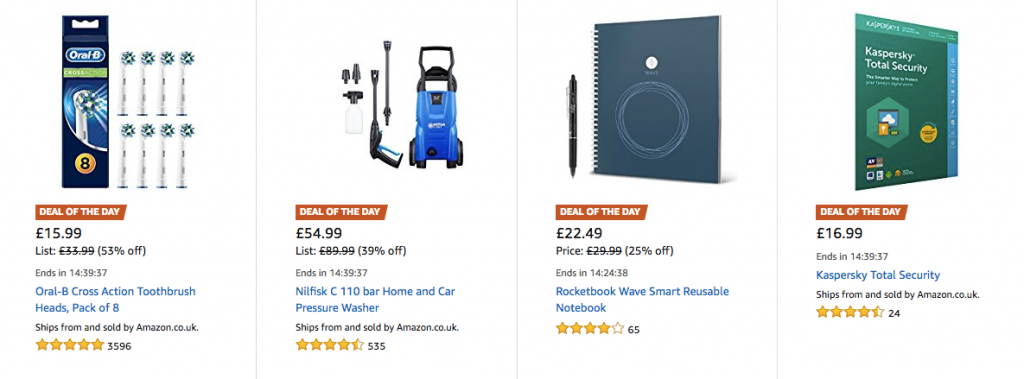
Discounted or not, the prices still end in .99, making consumers feel like they’re paying less.
But here’s the thing: this strategy isn’t a good fit for all businesses. It depends on what you’re trying to sell.
For example, if you’re in price-conscious market where customers are looking for value, like discounted headphones or smartphone cases, then ending prices in .99 might work for you.
But if you’re selling high-end, luxury products, you’re better off rounding prices because your audience isn’t looking for bargains or affordable products, but for premium products.
Check out this example from a shop selling crystal wine glasses:
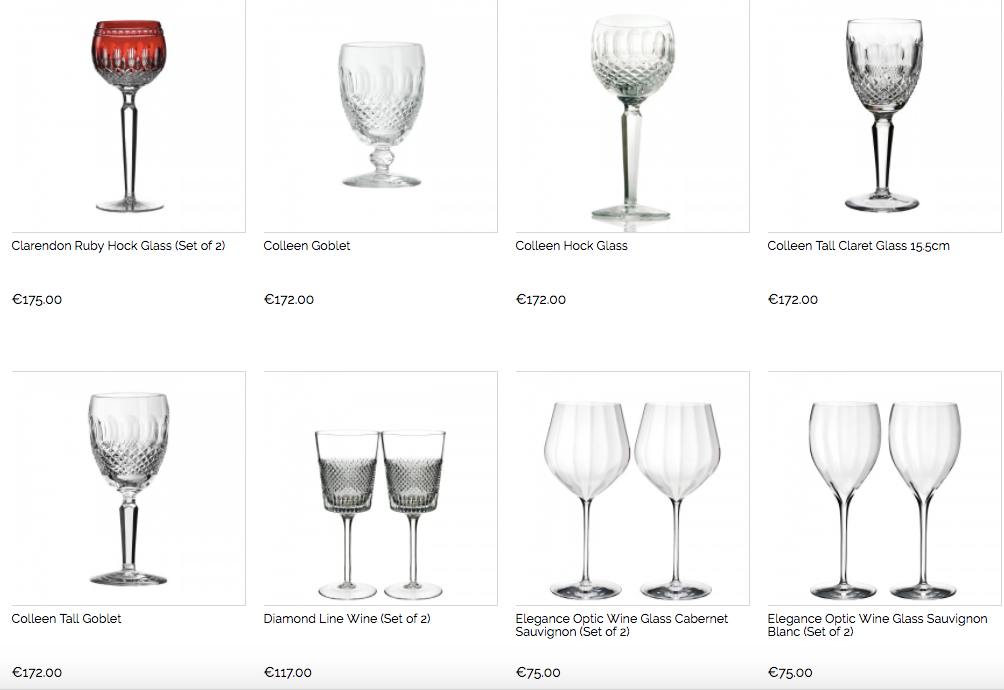
What to do next:
If you’re selling value and want to make it seem like your product is cheaper, go with prices that end in .99. But if you’re selling luxury products, skip the .99 and go with round numbers instead.
4. Adopt a fragmented pricing strategy
For most people, £29/ month sounds much more affordable than £300/ year, even though committing to the annual plan would save them money in the long run.
But since the reward is small and it’s not immediate, people usually choose to pay a lesser amount of money each month instead of paying £300 in one go, which is a much bigger investment.
With fragmented pricing, you can split the cost of something to show the daily/ weekly/ monthly cost, which makes it seem more affordable to prospects.
Here’s an example from GoAnimate where they use fragmented pricing for their plans. Rather than paying $299 upfront, consumers are given the option to split the cost on a per-month basis.
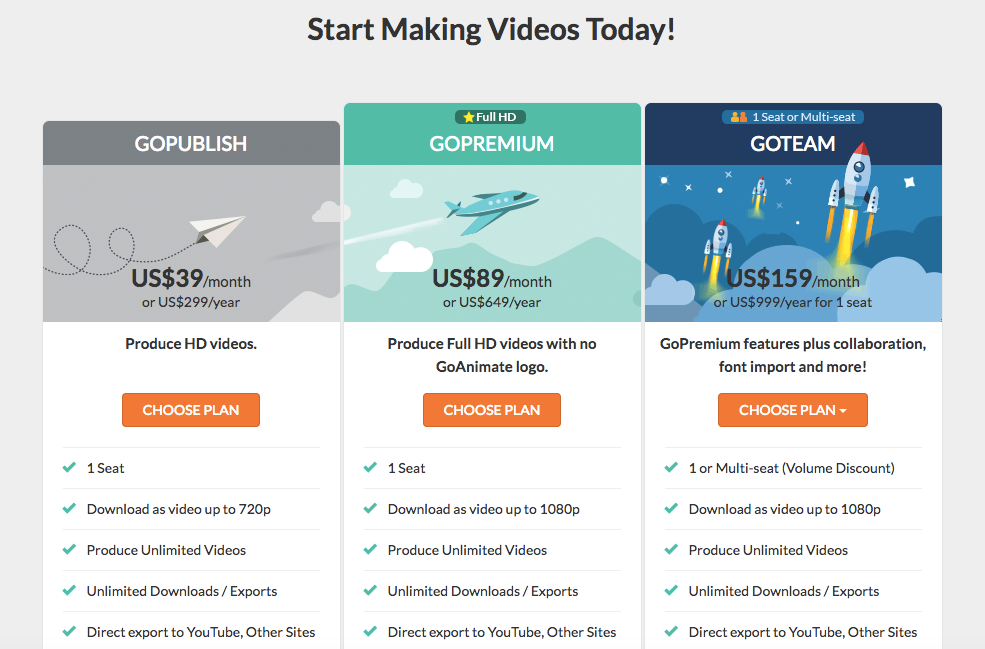
What to do next:
Whether you’re selling software or financial planning services, give prospects the option to buy at a low entry point by offering a monthly payment option. At the same time, set a higher price for it than for your annual one to encourage prospects to take advantage and save money.
5. Use the comparison pricing anchor strategy
Nothing is cheap or expensive by itself, unless you compare it to something.
Think about it. If you were to pay £30 for a coffee machine, that would seem cheap, right? But if you were to pay £30 for a cup of coffee, suddenly that seems expensive, doesn’t it?
It’s about contrast. Once you see a wine glass that costs £300, £50 sounds reasonable for a bottle of wine. Want to entice more visitors to buy that £500 travel backpack? Just place it next to a £2000 backpack.
This mental process has a name. It’s called anchoring and you can apply it to your pricing by offering prospects different versions, plans or packages that they’ll naturally compare.
Here’s an example from Buffer:
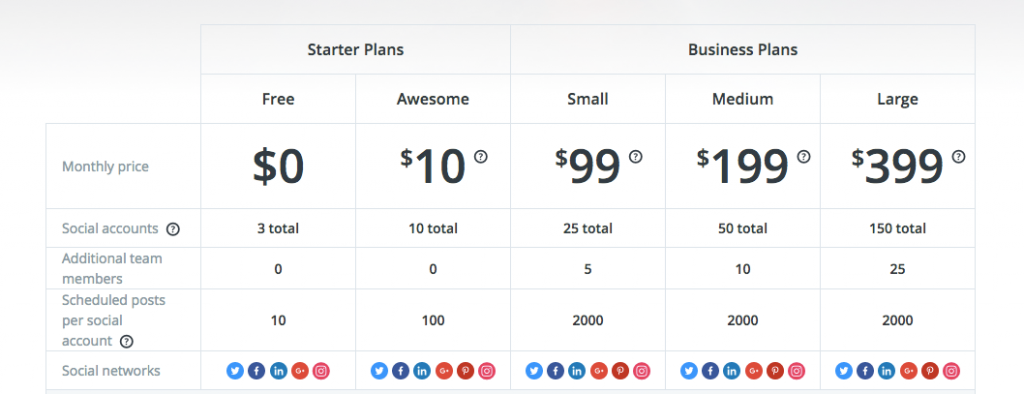
This type of tiered pricing structure encourages prospects to compare the different packages and look for the best deal.
What to do next:
If you want to encourage prospects to buy a specific plan, you need to be tactical and price the other plans to make that one particular plan more appealing in comparison.
6. Highlight the most popular pricing option
Another way you can guide prospects to a particular plan is to highlight it as the most popular option.
Here’s how easy GoToMeeting does this by simply adding a blue “Most Popular” label:
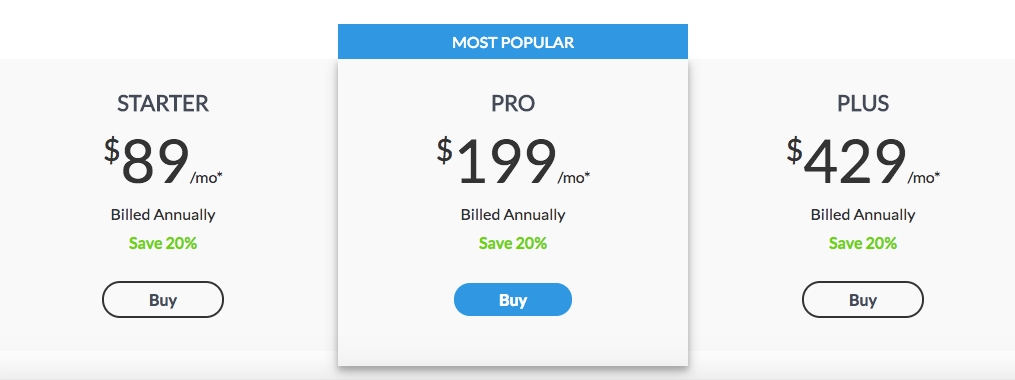
7. Display social proof on pricing pages
We’re more likely to purchase a product or a service when we see that others also purchased it and loved it. That’s why it’s so important to display social proof on your pricing page.
But what constitutes social proof? It can be anything from great ratings and reviews from customers displayed directly on the product’s page:
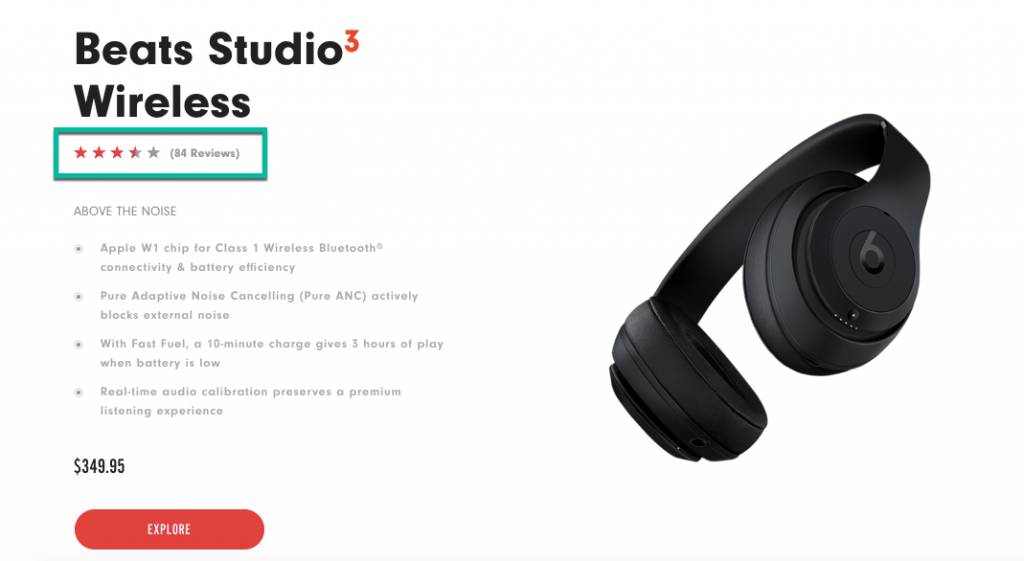
It can also be excellent ratings on review sites like TrustPilot or Checkatrade.com:
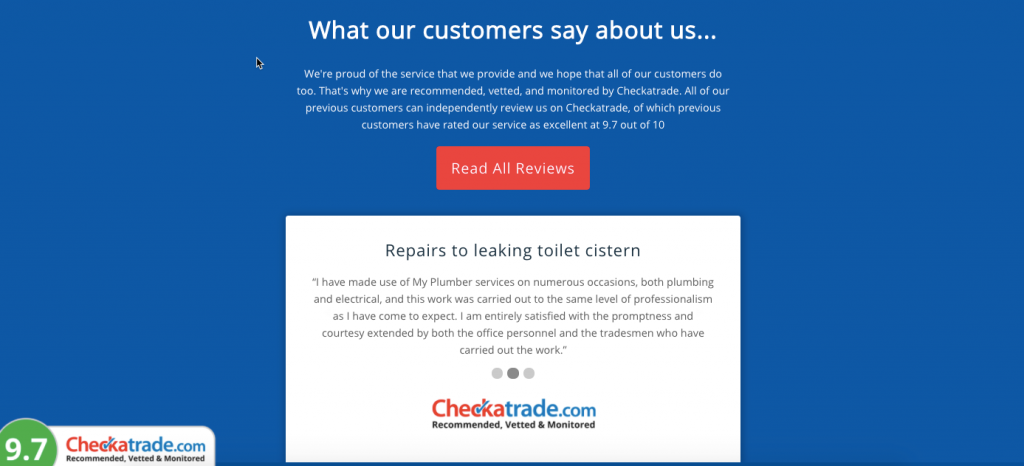
Or it can be logos of trusted brands that have used your product or service:
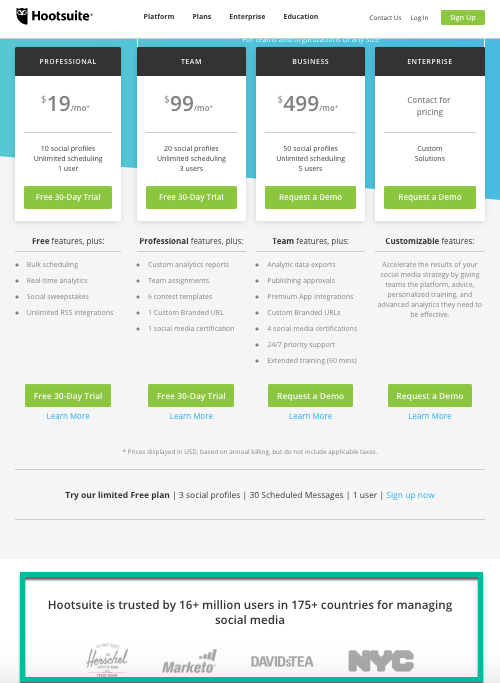
Wrapping up
Like everything, there’s no one-size fits all approach. Pricing is a process. This means that you’ll need to test and determine whether your prospects respond better to .99 or round number prices, to monthly or yearly payment plans, to popular or higher priced subscriptions.
